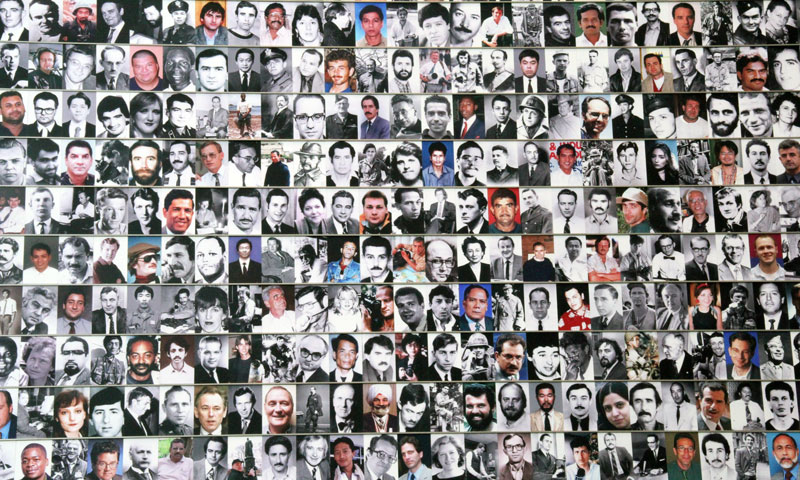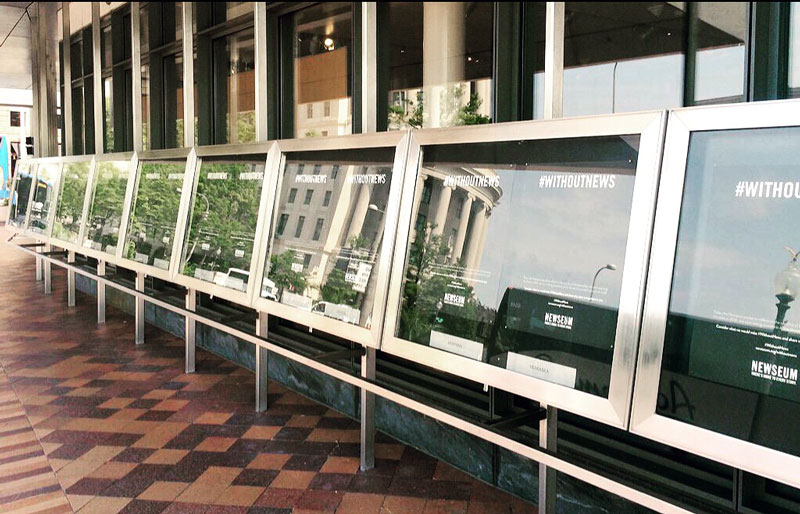WASHINGTON — Military Reporters and Editors, the Society of Professional Journalists and Northwestern University’s National Security Journalism Initiative sent a joint letter to Army Secretary John McHugh on June 19, requesting the immediate declassification of the investigation into Staff Sgt. Robert Bales’ horrific crimes in Afghanistan in March 2012.
Bales was sentenced to life in prison in August 2013 for murdering 16 Afghan civilians, including many women and children, during two solo nighttime raids in small villages in Kandahar province. The gruesome murders—dubbed the Kandahar massacre—sparked angry protests and forced the U.S. military to temporarily halt combat operations in the region.
“Bales pleaded guilty to his crimes and will spend the rest of his life in prison. His clemency request has been denied and U.S. forces are no longer operating at the combat outposts where he committed his crimes. We see no reason why the investigation should remain classified,” said MRE President Amy McCullough. “The reasons U.S. Central Command gave to some of our members for denying repeated FOIA requests no longer apply, and the public has a right to know if there was anything that could have been done to prevent this tragedy. I sincerely hope Secretary McHugh will do the right thing and declassify this report before his tenure ends.”
“The Pentagon has examined the events leading to Staff Sgt. Robert Bales’ crimes in Kandahar province, but the public has only the military’s word that it has done everything possible to learn from the incidents,” said Ellen Shearer, co-director of Northwestern University’s National Security Journalism Initiative. “The continued lack of transparency in this case is a shameful example of denying the public its right to know the truth about an important, terrible event in the war in Afghanistan.”
The letter reads, as follows:
June 19, 2015
Dear Secretary McHugh,
We write to draw your attention to an important document regarding SSgt. Robert Bales’ crimes in Kandahar province that has been concealed despite his conviction and the historic significance of the atrocities he committed. These obstacles are troubling to Military Reporters and Editors, the Society of Professional Journalists, and Northwestern University’s National Security Journalism Initiative. The gravity of Bales’ crimes argues for transparency in all aspects of his case. We ask you for your assistance in declassifying an Army regulation 15-6 investigation into Bales’ killings before your tenure as Army Secretary ends.
Since Bales’ was sentenced to life in prison in August 2013, three news organizations from the Puget Sound region near JB Lewis-McChord have submitted multiple Freedom of Information Act requests for an Army Regulation 15-6 investigation commissioned to look into whether anything could have been done to prevent Bales’ massacre in March 2012.
The News Tribune of Tacoma, The Seattle Times and NPR Seattle affiliate KUOW have had their FOIA requests denied and their appeals delayed. Normally, investigative documents used during courts-martial may be released through FOIA following the resolution of a case. That has not happened with the Bales 15-6.
U.S. Central Command rejected The News Tribune’s first request for the Bales 15-6 in January 2014. The reasons listed by Central Command included:
- JBLM’s I Corps headquarters had not yet considered Bales’ clemency
- Releasing the 15-6 could jeopardize ongoing operations for frequently deployed
- Releasing the 15-6 could obstruct a law enforcement
- Releasing the 15-6 could impair Bales’ rights to a fair and impartial
The News Tribune filed an appeal to this denial. CENTCOM has not yet considered it. CENTCOM has confirmed that The News Tribune’s appeal is No. 235 in line for further consideration, but has repeated the reasoning it offered to The News Tribune in denying FOIA requests from The Seattle Times and KUOW.
In the 17 months that have passed since CENTCOM’s denial, facts have changed that warrant an immediate reconsideration of CENTCOM’s withholding of the Bales 15-6.
- I Corps Commander Lt. Gen. Stephen Lanza has denied Bales’ clemency request and upheld his sentence.
- S. forces are no longer stationed at combat outposts near where Bales committed his massacre, according to open-source news reports published by the Army. Moreover, testimony at Bales’ court-martial revealed how he twice walked out of his outpost to kill civilians. Releasing more information about that aspect of this incident could do no more harm to U.S. forces than has already been done.
- Bales has been convicted and sentenced to life in prison. There is no pending law enforcement investigation that could be influenced by the release of the 15-6.
- The FOIA exemption that protects a defendant’s right to a fair and impartial hearing is intended to ensure that military juries are unbiased. Bales is past the point when a jury may consider evidence in his case. His fate now rests solely with military appeals
Marine Corps Gen. John Allen commissioned the report just after the massacre. He discussed it in press interviews from Kabul, assuring the public the military would do everything it could to learn from Bales’ killings.
“I will be satisfied when I get the report that we have looked closely at the potential contributing factors that might have permitted this event to have unfolded tragically,” Allen told reporters in March 2012, two weeks after the killings.
Bales committed a terrible crime and is serving his sentence. The public and the press still deserve the answers to the questions Allen aired when he announced the 15-6.
Sincerely,
Amy McCullough, MRE President
News Editor, Air Force MagazineIsaac Cubillos, MRE Vice President
Editor, Military Media GroupOtto Kreisher, MRE Treasurer
Freelance ReporterBryan Bender, MRE Board member
Defense Editor, PoliticoKristina Wong, MRE Board member
Defense Reporter, The HillDan Lamothe, MRE Board member
National Security Reporter, The Washington PostAlex Quade, MRE Board member
Freelance War ReporterGreg Mathieson, MRE Board member
Combat PhotographerJenn Rowell, MRE Board member
Military Reporter, Great Falls (Mont.) TribuneJohn Grady, MRE Board member
Freelance National Security ReporterEllen Shearer, Co-Director National Security Journalism Initiative
Professor, Northwestern University’s Medill School of JournalismDana Neuts, SPJ President
Freelance JournalistPaul Fletcher, SPJ President-Elect
Publisher/Editor-in-Chief, Virginia Lawyers WeeklyKaren Peterson, Executive Editor
The News TribuneKathy Best, Editor
The Seattle TimesPatricia Murphy, Military/Veterans Reporter
KUOW





![Chris Voss is the founder and CEO of the Black Swan Group. “There are few people that have worked for the [U.S.] government that know as much about international kidnapping as I do,” he said. (Photo courtesy of the Black Swan Group)](../../../../../wp-content/uploads/2015/06/ChrisVoss-blueshirt-small.jpg)




